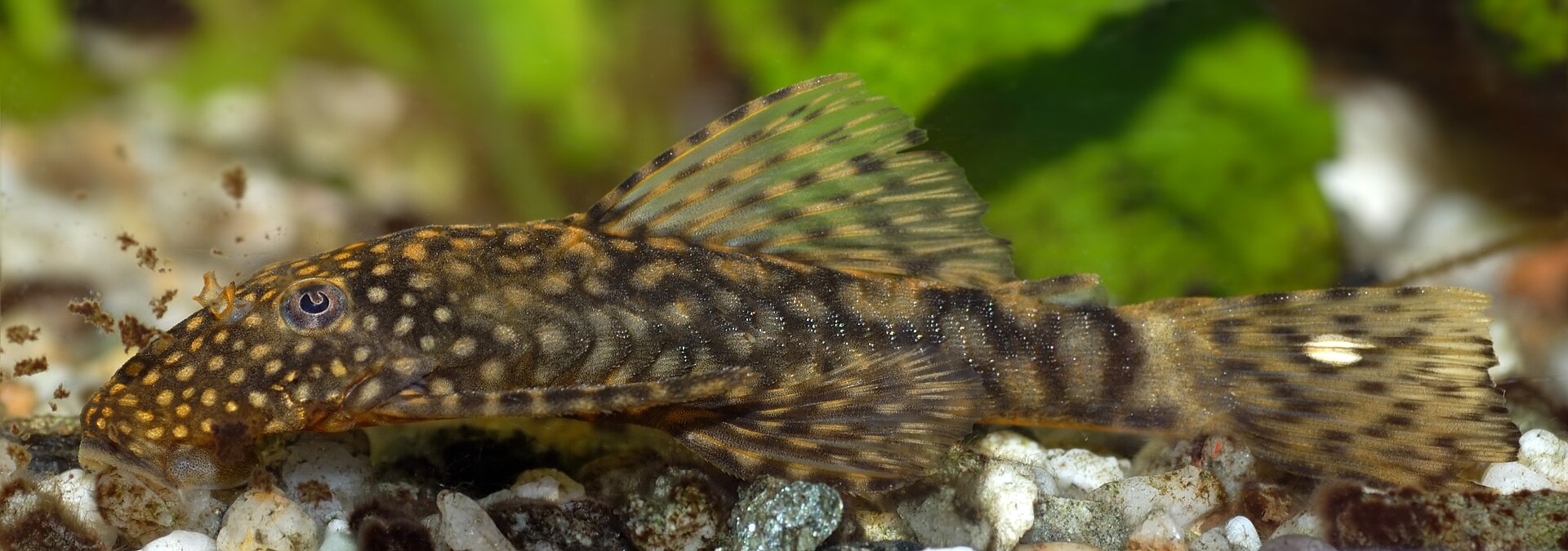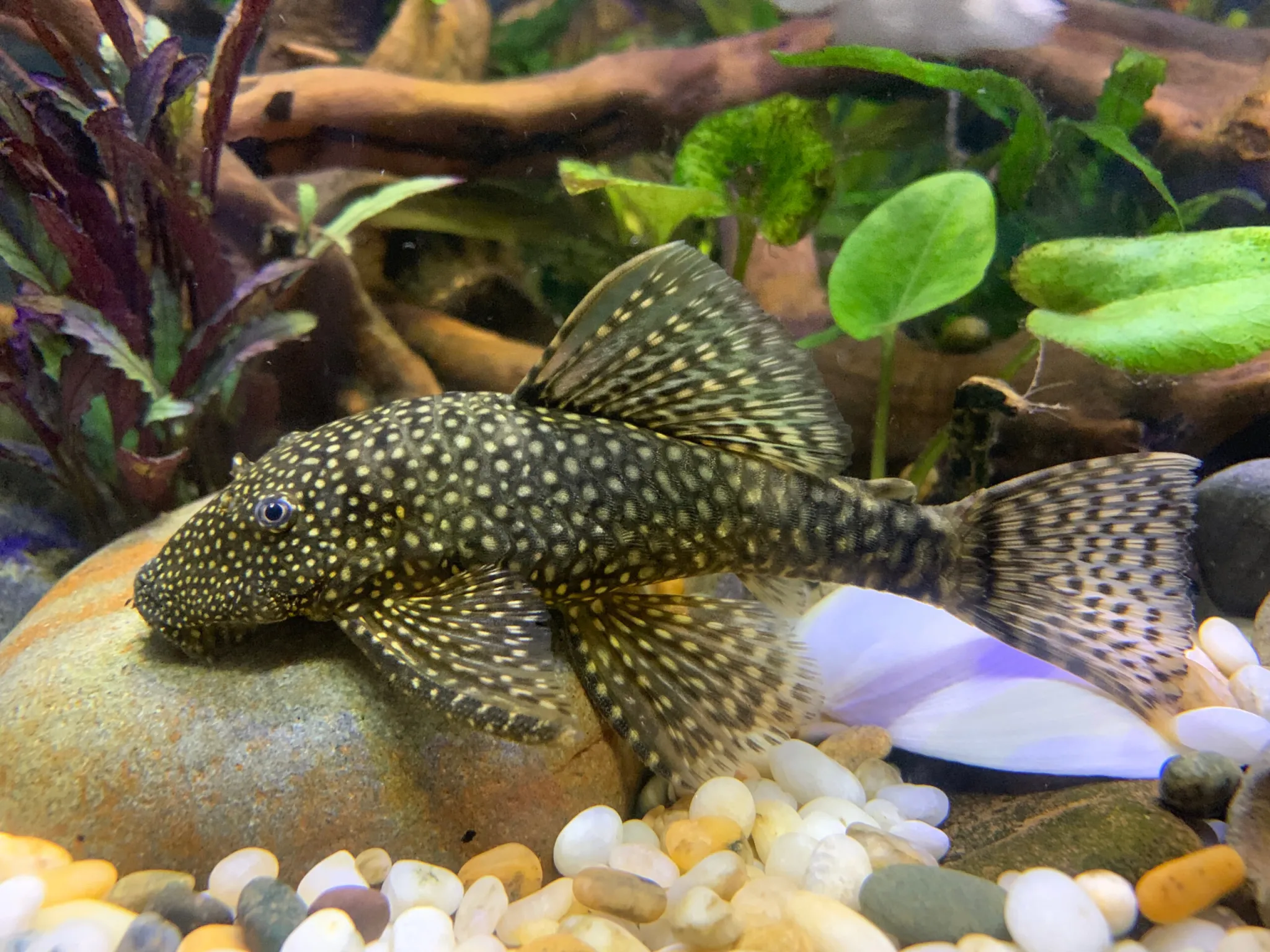
Welcome to our definitive guide on Ancistrus fish species! Whether you're an experienced aquarist or a newcomer to the world of fishkeeping, Ancistrus catfish are sure to capture your fascination with their unique appearance and behavior. In this comprehensive guide, we'll explore everything you need to know about Ancistrus fish species, including their origins, physical characteristics, care requirements, tank setup, breeding tips, and more. Let's dive in and uncover the beauty and wonder of these captivating freshwater fish.
Ancistrus Fish: Origins and History:
Ancistrus catfish, also known as bushynose or bristlenose catfish, originate from the rivers and streams of South America, particularly the Amazon River basin. Belonging to the Loricariidae family, Ancistrus species have been a staple in the aquarium hobby for decades due to their hardy nature, algae-eating habits, and charming personalities. Initially discovered in the early 19th century, Ancistrus catfish have since become popular among aquarists worldwide, with numerous species and color variations available to enthusiasts.
Varieties of Ancistrus Fish:
Ancistrus catfish encompass a diverse range of species and color morphs, each with its own distinct characteristics and markings. Some of the most commonly kept Ancistrus species include Ancistrus cirrhosus, Ancistrus dolichopterus, and Ancistrus temminckii, each varying in size, coloration, and fin shapes. Additionally, selective breeding efforts have resulted in the development of numerous color morphs, including albino, calico, and longfin varieties, offering hobbyists a wide array of options to choose from to suit their preferences and tank setups.

Physical Characteristics:
Ancistrus catfish are easily recognizable by their flattened bodies, armor-like plates, and, in the case of males, prominent bristle-like growths on their snouts, which give them their common name of "bristlenose" catfish. These growths, known as odontodes, are more pronounced in mature males and serve various purposes, including territorial displays and sensory functions. Ancistrus catfish exhibit a range of colorations, including shades of brown, black, and olive, with some species displaying intricate patterns and markings.
Tank Requirements and Setup:
Creating an optimal habitat for Ancistrus catfish is essential to their health and well-being. A spacious aquarium with plenty of hiding places, such as caves, driftwood, and plants, mimics their natural environment and provides shelter and security. A soft, sandy substrate is preferred, as Ancistrus catfish enjoy sifting through the substrate in search of food and nesting materials. Water parameters should be closely monitored and maintained within the optimal range for Ancistrus, including a pH level between 6.5 to 7.5, temperature between 72°F to 80°F, and moderate water flow.
Diet and Feeding Habits:
Ancistrus catfish are omnivores with a hearty appetite for algae, making them valuable additions to any aquarium ecosystem. In addition to algae, Ancistrus should be offered a varied diet consisting of high-quality sinking pellets, blanched vegetables (such as zucchini, cucumber, and spinach), and occasional protein-rich treats like bloodworms or brine shrimp. Regular feeding schedules and portion control are essential to prevent overfeeding and maintain optimal water quality.
Compatibility and Tankmates:
When selecting tankmates for Ancistrus catfish, it's essential to consider their peaceful temperament and bottom-dwelling behavior. Compatible tankmates include other peaceful community fish species that inhabit different levels of the aquarium, such as tetras, rasboras, gouramis, and small cichlids. Avoid keeping Ancistrus with aggressive or territorial species that may harass or outcompete them for resources. Additionally, provide ample hiding spots and territories to reduce stress and aggression among tank inhabitants.
Breeding Ancistrus Fish:
Breeding Ancistrus catfish can be a rewarding and fascinating experience for aquarists interested in observing the intricacies of fish reproduction. To encourage spawning, create breeding caves or provide suitable flat surfaces, such as slate or PVC pipes, where females can deposit their eggs. Maintaining stable water conditions, including slightly warmer temperatures and frequent water changes, can stimulate breeding behavior. Once eggs are laid, carefully monitor water quality and remove any potential threats to the eggs or fry, such as aggressive tankmates or fluctuating water parameters.
Common Health Issues and Care Tips:
Ancistrus catfish are generally hardy and resilient when provided with proper care and a suitable environment. However, they are susceptible to certain health issues, including parasitic infections, bacterial diseases, and digestive problems. Regular observation and early detection of symptoms, such as lethargy, loss of appetite, or abnormal behavior, can help prevent the spread of illness within the aquarium. Quarantine new fish before introducing them to an established tank to minimize the risk of introducing diseases.
Conclusion:
In conclusion, Ancistrus catfish species are a captivating and valuable addition to any freshwater aquarium, offering both aesthetic beauty and practical benefits in algae control. With their unique appearance, peaceful temperament, and beneficial behaviors, Ancistrus catfish have rightfully earned their place as beloved inhabitants of countless home aquariums worldwide. By providing them with a suitable environment, proper nutrition, and attentive care, you can enjoy the beauty and wonder of these fascinating fish for years to come.



